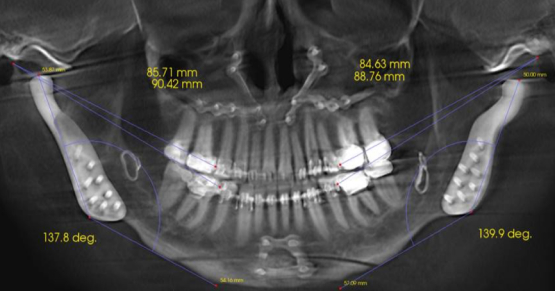The Problem With Acidulated Fluoride
I’ve done a lot of external coloring of my restorations throughout my career, and I’m frequently asked questions regarding the durability of external colorants. My personal belief is if you treat the restorations carefully, the colorant will be highly durable; however, when you throw acidulated fluoride or abrasives into the mix, the durability of that colorant drops to almost non-existent.
In my master’s thesis, I looked at commonly used fluorides and tested their impact when applied to porcelain. The tests consisted of baking porcelain onto a semiprecious metal, glazing it, and looking at the samples under an electron microscope with a surface profilometer to evaluate what happened to the surface over time.
At the time, the results I found were shocking: Any time acidulated fluoride was used, the change in the surface of the porcelain was immediate; within 15–20 minutes of exposure, the entire surface of the porcelain was completely stripped. And if you think about it, that amount of time can add up quickly for a patient who’s frequently coming in for restorations or who’s using fluoride at home.
The acidulation of fluoride was used as a tool to increase the uptake of fluoride ion by the tooth. This makes a lot of sense for children as a single-shot fluoride treatment, but hydrofluoric acid is used to acidulate the fluoride. This is the same type of acid lab technicians use to etch veneers, onlays, and crowns, and the same stuff we use to strip porcelain off metal copings when necessary — not something that should be used in mouths with ceramic restorations.
The good news is that neutral sodium fluoride or stannous fluoride has no negative effects on ceramics, only the acidulated fluorides. In addition, we should eliminate any abrasive prophy pastes at our recalls for patients with ceramic restorations, especially those that have been externally colored.
SPEAR STUDY CLUB
Join a Club and Unite with
Like-Minded Peers
In virtual meetings or in-person, Study Club encourages collaboration on exclusive, real-world cases supported by curriculum from the industry leader in dental CE. Find the club closest to you today!

By: Frank Spear
Date: May 7, 2013
Featured Digest articles
Insights and advice from Spear Faculty and industry experts


